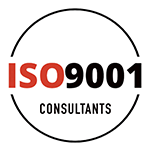A Quality Management System (QMS) audit evaluates an organisation’s processes, procedures, and overall commitment to maintaining a high level of quality in its products and services. Conducting regular audits is essential to ensure continuous improvement and to maintain compliance with relevant standards, such as ISO 9001.
However, the audit process can be daunting, and organisations often make mistakes that can lead to inefficiencies, non-conformances, and even failure to achieve certification. With that in mind, it’s worth discussing some common mistakes made during QMS audits, so you can learn more about how to best avoid them.
What are the Top Mistakes in a QMS Audit?
1. Inadequate Preparation
One of the most common mistakes organisations make when preparing for a QMS audit is not dedicating enough time and resources to the process. This can lead to incomplete or inaccurate documentation, a lack of understanding of the standard’s requirements, and insufficient evidence of conformance.
To avoid this, organisations should:
- Begin preparations well in advance of the audit date.
- Allocate sufficient resources to the audit process, including dedicated personnel and time.
- Ensure that all employees understand the importance of the audit and their responsibilities.
- Conduct internal audits and management reviews to identify areas for improvement and address non-conformances.
2. Insufficient or Inconsistent Documentation
A key aspect of a QMS audit is the evaluation of an organisation’s documented processes and records. If your documentation is incomplete, inconsistent, or not aligned with the ISO 9001:2015 standard, it may lead to non-conformance findings.
To avoid documentation-related issues:
- Ensure that all processes are documented in a clear and consistent manner.
- Regularly review and update your documentation to reflect changes in processes, equipment, or personnel.
- Maintain records that demonstrate conformance with the standard, such as training records, calibration records, and audit findings.
3. Lack of Employee Engagement
Employee engagement serves as a powerful force behind the the success of your QMS audit. If your employees are unaware of the QMS requirements or do not understand their roles and responsibilities, it can lead to non-conformance findings.
To ensure employee engagement:
- Provide regular training and communication about the QMS and audit process.
- Involve employees in the development and implementation of the QMS.
- Encourage feedback and suggestions for improvement from employees.
- Recognise and reward employees who contribute to the success of the QMS.
4. Not Addressing Previous Audit Findings
If your organisation has previously undergone a QMS audit, it is essential to address any non-conformance findings and implement corrective actions. Failure to do so can lead to recurring issues and potentially more severe consequences.
To ensure that previous audit findings are addressed:
- Develop an action plan to address each non-conformance, including root cause analysis, corrective actions, and a timeline for implementation.
- Monitor the effectiveness of the corrective actions and make adjustments as necessary.
- Communicate the results of the corrective actions to all relevant personnel.
5. Overlooking Risk Management
A critical component of ISO 9001:2015 is the requirement for organisations to establish a risk-based approach to quality management. Organisations that do not adequately address risk management may face non-conformance findings during their QMS audit.
To ensure effective risk management:
- Identify potential risks and opportunities related to your organisation’s processes, products, or services.
- Assess the impact and likelihood of each identified risk.
- Develop risk mitigation strategies and incorporate them into your QMS processes.
- Continuously monitor and review risks to ensure that they are effectively managed.
The Bottom Line
A successful QMS audit is essential for maintaining your organisation’s ISO 9001:2015 certification and ensuring the continued effectiveness of your quality management system. By steering clear of the usual mistakes discussed in this blog section, you can improve your chances of a successful audit outcome and continue to drive improvements in your organisation’s quality processes.
Remember, the QMS audit is not just a checkbox exercise but an opportunity to demonstrate your commitment to quality and continual improvement.
So if you are looking for an ISO auditor in Sydney, look no further than ISO 9001 Consultants. Our team of experienced auditors and consultants is here to help you achieve ISO certification, and ensure that your organisation remains compliant with current ISO standards. Contact us today to find out more about our ISO audit services.








Users Comments